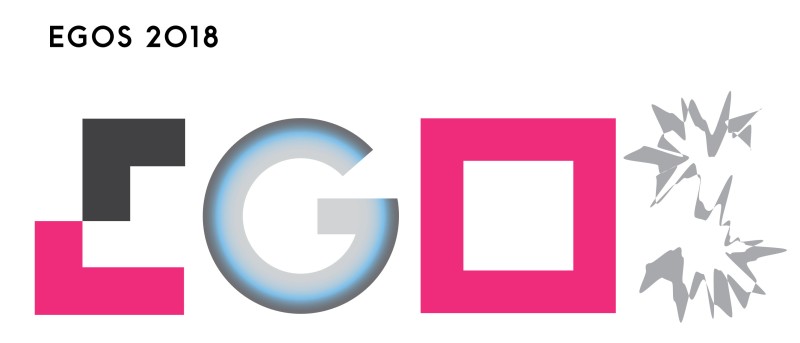Sub-theme 05: [SWG] Organization as Communication: The Enduring and Fading Away of Organizations
Call for Papers
Things persist: bodies, objects, infrastructures, ideas keep on lasting, and so do organizations. For these latter, the
question of continuity is quintessential (Bennis et al, 1992), and yet often taken for granted (Hernes & Weik, 2007).
As precarious accomplishments (Cooren et al., 2011), organizations are said to be fragile and only “temporarily stabilized”
(Nayak & Chia, 2011) – their capacity to last is related to situated interactions and the manifold, heterogeneous agents
involved in this work bring about multiple and changing representations so that a sense of coherence and direction that may
emerge from these articulations is itself only temporary (Petani & Mengis, 2016; Vásquez & Cooren, 2013). Considering
organizations from this processual and situated perspective highlights the relevance of developing a better understanding
of the processes through which organizations gain endurance (Tsoukas & Chia, 2000): How do organizations come to last
through space and time? What are the processes that trigger, maintain, and challenge their continuity?
The
transcendence of collectivities has puzzled many scholars who have tried to understand it by focusing on persistence, perdurance,
or duration, suggesting a shift from an essentialist to an experiential view of social reality. Whitehead (1961[1933]) has
been particularly influential in so doing in organization studies (see, for example, Hernes, 2008, 2014). With his notion
of ‘endurance’, he highlighted the importance of interrogating this peculiar quality through which something succeeds in maintaining
some “thread of conformity” between past, present and future (Meyer, 2015; Stengers, 2005).
This sub-theme
proposes to explore how this thread of conformity is constituted and/or threatened. We suggest that a communication-centered
perspective can contribute to answering the questions raised above by proposing a relational account and by putting forward
the constitutive/performative role of communication (through conversations, texts, bodies, artefacts, etc.) in making organization
‘go on mattering’ (Stengers, 2005; see also Bencherki & Cooren, 2011). In so doing, this focus also allows an exploration
of the fading of an organization, i.e., when things stop mattering and lead organizations to fail (Taylor & Van Every,
2014; Weick, 1993).
We invite papers that either address the more particular focus of the sub-theme or are
concerned with studying organization and organizing from a communication-centered lens more generally. Below is a list of
indicative, but not exhaustive, topics and questions:
How do humans, practices, artefacts, texts, technologies and architectural elements participate in maintaining a ‘thread of conformity’? For example, how do managerial tools and their representations and relationalities impose stability and what are the dynamics that emerge in view of these performances?
What are the practical challenges of making organizations last in contexts characterized by space/time compression, globalization and mobility?
How can we study endurance from a processual and situated perspective on organization ‘in the making’? What are the contributions of a communication-centered perspective?
Organizations are at times resilient (Weick, 1993) when facing critical events or change; at other times, they are extremely vulnerable. What makes them more resistant, more vulnerable? What increases their vulnerability?
Things matter and are key in making organization ‘go on mattering’. What can a focus on materiality offer to understand the lasting and/or fading away of organization? What are the methodological implications of this material focus (see, for example, Mengis et al., 2016)?
What does a conceptualization of the paradoxical, ambiguous and unmanaged nature of communication add to the understanding of organizational endurance? How can we reconcile continuity and discontinuity, stability and change, endurance and death of organization?
References
- Bencherki, N., & Cooren, F. (2011): “Having to be: the possessive constitution of organization.” Human Relations, 64 (12), 1579–1607.
- Bennis, W., Mason, R.O., & Mitroff, I.I. (1992): Executive and Organizational Continuity: Managing the Paradoxes of Stability and Change. San Francisco: Jossey-Bass.
- Cooren, F., Kuhn, T., Cornelissen, J.P., & Clark, T. (2011): “Communication, organizing and organization: An overview and introduction to the special issue.” Organization Studies, 32 (9), 1149–1170.
- Hernes, T. (2008): Understanding Organization as Process. Theory for a Tangled World. London & New York: Routledge.
- Hernes, T. (2014): A Process Theory of Organization. Oxford, UK: Oxford University Press.
- Hernes, T., & Weik, E. (2007): “Organization as process: Drawing a line between endogenous and exogenous views.” Scandinavian Journal of Management, 23 (3), 251–264.
- Nayak, A., & Chia, R. (2011): “Thinking becoming and emergence: process philosophy and organization studies.” In: H. Tsoukas R. Chia (eds.): Philosophy and Organization Theory. Research in the Sociology of Organizations, Vol. 32. Bingley: Emerald Group Publishing Ltd., 281–309.
- Mengis, J., Nicolini, D., & Gorli, M. (2016): “The Video Production of Space How Different Recording Practices Matter.” Organizational Research Methods, http://wrap.warwick.ac.uk/81822/3/WRAP_the_video_production_of_space_final_for_publication.pdf
- Meyer, S. (2015): “Prefiguring Whitehead: Reading Jamesian pragmatism with Stengers and Latour.” In: B.G. Henning, W.T. Myers & J.D. John (eds.): Thinking with Whitehead and the American Pragmatists: Experience & Reality. New York: Lexington Books, 57–76.
- Petani, F.J., & Mengis, J. (2016): “In search of lost space: The process of space planning through remembering and history.” Organization, 23 (1), 71–89.
- Stengers, I. (2005): “Whitehead’s account of the sixth day.” Configurations, 13, 35–55.
- Taylor, J.R., & Van Every, E. (2014): When Organization Fails. Why Authority Matters. New York: Routledge.
- Tsoukas, H., & Chia, R., (2002): “On organizational becoming: Rethinking organizational change.” Organization Science, 13 (5), 567–582.
- Vásquez, C., & Cooren, F. (2013): “Spacing practices: The communicative configuration of organizing through space-times.” Communication Theory, 23 (1), 25–47.
- Weick, K.E. (1993): “The collapse of sensemaking in organizations: The Mann Gulch disaster.” Administrative Science Quarterly 38 (4), 628–652.
- Whitehead, A.N. (1961 [1933]): Adventures of Ideas. New York: Free Press.


